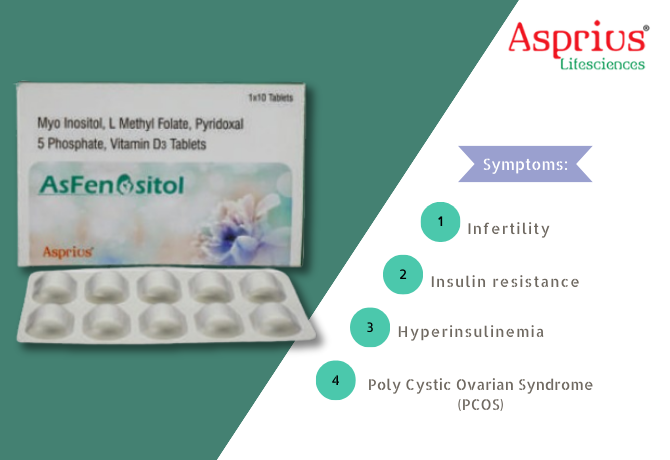
Dr. Sanjay Agrawal
Leading Pharmaceutical consultant and editor-in chief of IJMToday

Diabetes mellitus is a chronic health condition characterised by high blood glucose level. They are mainly classified into type 1, type 2 and gestational diabetes. Type 1 diabetes is a result of autoimmune destruction of pancreatic β cells producing insulin and type 2 diabetes occurs due to the impaired insulin secretion from the β cells or impaired insulin action as a result of insulin resistance. Pathogenesis of type 1 diabetes is mediated via the action of interleukins, TNF-α, T-lymphocytes causing destruction of pancreatic β cells whereas in type 2 diabetes through mutations in genes or lifestyle factors (Ozougwu et al., 2013).
Effect of omega-3 FA in causing diabetes and its associated risk factors still remains unclear. Various studied were conducted to determine its effect on diabetes and many are still under progress. According to the study conducted by Kaushik et al, consumption of fish and omega-3 FA in higher amounts didn’t help in lowering blood glucose level whereas it modestly increased chances of developing type II diabetes mellitus. They also reported an increase in the level of glycated haemoglobin (Hb A1C) and fasting blood glucose level in people who consumed omega-3 FA (Kaushik et al., 2009). Based on the results obtained from the study conducted by chewcharat et al omega-3 FA was effective in reducing proteinuria thereby decreasing the chances of diabetic nephropathy. Even though the mechanism underlying this function is not yet clear it is believed to be due to its anti-inflammatory and oxidative stress effects.Due to the formation of advanced glycation end-products (AGE), activation of protein kinase C (PKC), and production of reactive oxygen species, hyperglycaemia in diabetic patients causes podocyte injury as well as endothelial cell and tubulointerstitial injury. This process is crucial for the beginning and progression of proteinuria and diabetic nephropathy.Omega-3 fatty acids aid in lowering adipose tissue’s pro-inflammatory reactions and insulin resistance. When compared to people with type 1 diabetes, whose proteinuria is mostly caused by the polyol, hexosamine, advanced glycation end product, and protein kinase C (PKC) pathway, this action may result in lesser proteinuria(Chewcharat et al., 2020). Wu et al have also reported heterogenic effects on the risk of diabetes mellitus (DM), where upon EPA/DHA and sea food/fish consumption by people in Asia have resulted in lesser risk of DM and increased risk in North America/Europe which may be attributable to the type of fish consumed or different method of preparations (Wu et al., 2012). Type 1 diabetes mellitus which is an autoimmunity disorder characterised by the generation of islet autoantibodies (IA) was developed mainly due to genetic and environmental factors including dietary factors. Norris et al have studied on the effects of omega-3 supplements in the onset of IA and they concluded from their studies that it had reduced the risk of IA in children more prone to type I diabetes through genetic factors(Norris et al., 2007).
Behl, T. et al have studied on the beneficial effects of omega-3 FA in diabetic retinopathy. Due to their extensive spectrum of protective qualities, which include anti-inflammatory, antiangiogenic, and antioxidant, among many others, they have a significant potential to prevent the advancement of diabetic retinopathy. They block a variety of inflammatory mediators involved in the pathogenesis of diabetic retinopathy, in addition to reducing free radical production and increasing the expression of endogenous antioxidant enzymes.Further, they significantly suppress retinal angiogenesis from initiating by reducing the levels of different angiogenic gene expression substances like VEGF (Vascular Endothelial Growth Factor), MMPs (Metalloproteinases), and COX-2 (Cyclooxygenase-2)(Behl and Kotwani, 2017).
Yee, P. et al have studied the effect of change in lipid metabolism as a consequence of retinal damage in diabetes patients and concluded that a balanced diet intake of omega-3 FA can maintain lipid membranes of retina in diabetes patients and improve rod dysfunction.The cone or glial response did not show dietary alteration, however the greater photoreceptor output is probably what caused the partial improvement in the OPs (oscillatory potential, which measures the activity of retinal neurons) (Yee et al., 2010).Hence various studies help us to conclude that there is not much evidence in supporting that omega-3 FAs can reduce the risk of type I and II diabetes but they can be a factor in reducing certain complications due to diabetes like diabetic nephropathy, diabetic retinopathy, diabetic neuropathy, IA production etc.
References
BEEVERS, G., LIP, G. Y. & O’BRIEN, E. 2001. The pathophysiology of hypertension. Bmj, 322, 912-916.
BEHL, T. & KOTWANI, A. 2017. Omega-3 fatty acids in prevention of diabetic retinopathy. Journal of Pharmacy and Pharmacology, 69, 946-954.
CABO, J., ALONSO, R. & MATA, P. 2012. Omega-3 fatty acids and blood pressure. British Journal of Nutrition, 107, S195-S200.
CHEWCHARAT, A., CHEWCHARAT, P., RUTIRAPONG, A. & PAPATHEODOROU, S. 2020. The effects of omega-3 fatty acids on diabetic nephropathy: A meta-analysis of randomized controlled trials. PloS one, 15, e0228315.
COVINGTON, M. 2004. Omega-3 fatty acids. American family physician, 70, 133-140.
HARRIS, W. S. 2004. Omega-3 fatty acids. Encyclopedia of dietary supplements. CRC Press.
HTTPS://GO.DRUGBANK.COM/DRUGS/DB11133https://go.drugbank.com/drugs/DB11133.
HTTPS://WWW.CDC.GOV/BLOODPRESSURE/FACTS.HTMhttps://www.cdc.gov/bloodpressure/facts.htm.
KAUSHIK, M., MOZAFFARIAN, D., SPIEGELMAN, D., MANSON, J. E., WILLETT, W. C. & HU, F. B. 2009. Long-chain omega-3 fatty acids, fish intake, and the risk of type 2 diabetes mellitus. The American journal of clinical nutrition, 90, 613-620.
MORI, T. A. 2006. Omega-3 fatty acids and hypertension in humans. Clinical and experimental pharmacology & physiology, 33, 842-846.
NORRIS, J. M., YIN, X., LAMB, M. M., BARRIGA, K., SEIFERT, J., HOFFMAN, M., ORTON, H. D., BARÓN, A. E., CLARE-SALZLER, M. & CHASE, H. P. 2007. Omega-3 polyunsaturated fatty acid intake and islet autoimmunity in children at increased risk for type 1 diabetes. Jama, 298, 1420-1428.
OZOUGWU, J., OBIMBA, K., BELONWU, C. & UNAKALAMBA, C. 2013. The pathogenesis and pathophysiology of type 1 and type 2 diabetes mellitus. J Physiol Pathophysiol, 4, 46-57.
WU, J. H., MICHA, R., IMAMURA, F., PAN, A., BIGGS, M. L., AJAZ, O., DJOUSSE, L., HU, F. B. & MOZAFFARIAN, D. 2012. Omega-3 fatty acids and incident type 2 diabetes: a systematic review and meta-analysis. British journal of nutrition, 107, S214-S227.
YEE, P., WEYMOUTH, A. E., FLETCHER, E. L. & VINGRYS, A. J. 2010. A role for omega-3 polyunsaturated fatty acid supplements in diabetic neuropathy. Investigative ophthalmology & visual science, 51, 1755-1764.




